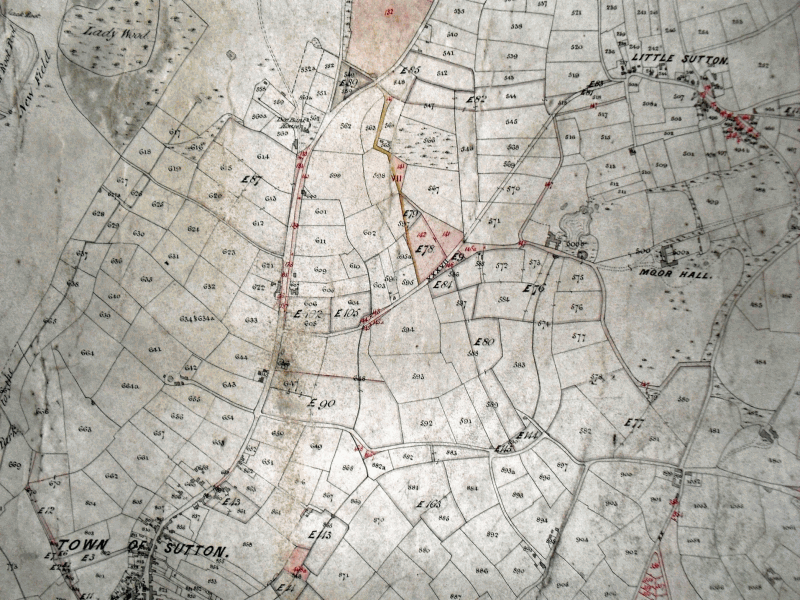Edward and Thomas Willoughby, father and son, were prominent Suttonians in the seventeenth century. Edward, whose brother was Sir Percival Willoughby of Middleton, was Warden in 1622 and built the stone house at no. 1 High Street; Thomas lived at the house next door, now Vesey House. Thomas was a Roundhead, he became a Colonel in Cromwell’s New Model Army, and as a member of the Warwickshire Committee, kept the county loyal to Parliament through the Civil war - he was a magistrate and an MP. Thomas’s son and heir was Richard Willoughby, who when his father died in 1661 was living in London; he decided to sell all the Sutton property he had inherited.
Some of the sale documents survive; in May 1662 Richard Willoughby of Grays Inn, London Esquire sold some land to Richard Williams of London, including “the Cottage Estate”. This estate had come into the possession of Samuel Smith of Coleshill, Innholder, by 1824, and is referred to in Samuel Smith’s 1829 will as “near Sutton Park which was purchased of Mr. Hacket comprising a house called the Cottage and 23 acres of land”. The cottage was not very old, being a large house in the Regency or late Georgian style current in the first two decades of the nineteenth century; the Cottage Estate is shown on a survey of Mr. Hacket’s lands made in 1763, when no cottage is listed.
The Cottage was named in the 1841 census as “Nineveh Cottage”, perhaps because it was built on the ruins of a much earlier house (the ancient city of Nineveh, sacked in 612 BC, was a famous ruin). The existence of this earlier house would explain the description of the property as “The Cottage Estate” in 1662; it had probably been an adjunct of the High Street house when Thomas Willoughby acquired it in 1640. The High Street house had previously belonged to the Gibbons family of New Hall.
In his recent book “The Archaeology of Sutton Park” Dr. Mike Hodder suggests that the medieval Sutton Park extended as far east as Lichfield Road, so the Cottage Estate would have been carved out of the Park (the 1763 survey names four of the fields “Park Leasow” and the fifth “Park Meadow”). A clause in Sutton’s 1528 Charter of Incorporation specified that “any person…willing to build…a new house…in any part of the waste land…may do so…and enclose with hedges sixty acres of the waste or less”; Thomas Gibbons was one of the enterprising men who took advantage of this clause. He took sixty acres of Park land to make a farm near Powells Pool, and so he was quite capable of building the cottage and helping himself to another twenty-six acres of Park land to go with it.
The map shows further long stretches of land to the north of the Cottage Estate, no doubt colonised by other developers, where Wyvern Road, Barker Road and Blackroot Road are now - probably the land to the south (the Anchorage Estate) was taken first, then the Cottage Estate, followed a few years later by the fields behind Bleak House, and so on as far as Blackroot Road; in 1554 the clause permitting carving estates out of the commons and Park was rescinded. The land north of Blackroot Road was still common, so when private individuals took the land in for cultivation, it was done by agreement with the community, and held by lease from the Warden and Society (E87 on the map).
